Treehoppers’ Bizarre, Wondrous Helmets Use Wing Genes to Grow
The elaborate structures, which are not actually wings, can resemble thorns, leaves, ants and more
/https://tf-cmsv2-smithsonianmag-media.s3.amazonaws.com/filer/ba/8d/ba8db3b0-3ad0-455c-8a28-83a0df3483bd/32886970088_7e3a2a5011_o.jpg)
As their name suggests, treehoppers are capable of some amazing acrobatics. But these cicada relatives are even more intriguing to scientists for the stupendous structures that sprout from their backs. These outgrowths, called helmets, are present on all 3,300 species of treehopper, varying dramatically in appearance. Likely for the sake of avoiding predation, the helmets can take the form of thorns, leaves, feces or even other bugs, like ants or wasps.
Evolutionary biologists have long puzzled over these helmets, which resemble nothing else in nature, and how they became so diverse. In 2011, a team of researchers led by Benjamin Prud’homme proposed a theory that suggested the wonky structures were actually highly modified sets of wings.
If true, the claim would have profound evolutionary implications. It would mean treehoppers had grown a third set of wings on the thorax, or the middle section of the body—likely making them the first insects to do so in about 250 million years.
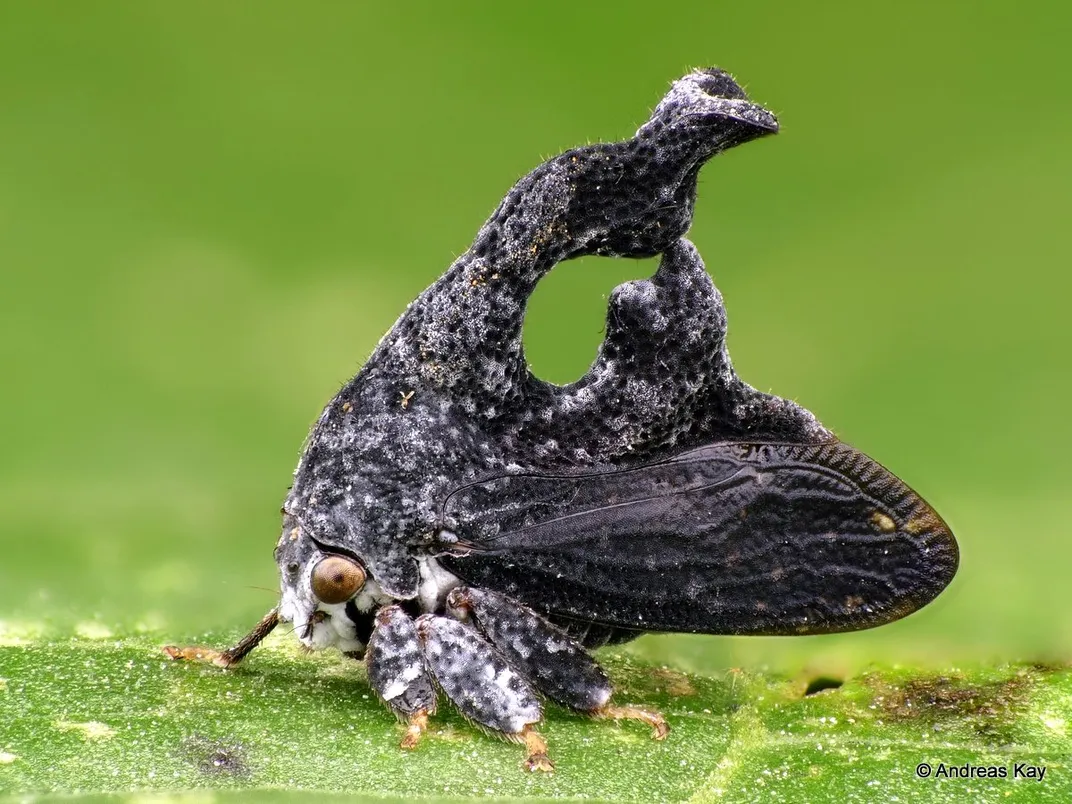
Prud’homme and his team’s research sent ripples through a small but avid community of entomologists, some of whom began to push back. Dissenters, including Hokkaido University’s Kazunori Yoshizawa, insisted that the helmet wasn’t a set of wings, but rather an elaborate pronotum—a normal part of the thorax that looks like a flat plate in many other insects, including treehoppers’ close relatives, leafhoppers.
Now, a trio of University of Connecticut biologists led by Cera Fisher has analyzed genetic data that could help resolve the helmet mystery once and for all. Their study, published today in Nature Ecology & Evolution, suggests treehopper helmets are indeed bits of thorax, not wings. But there’s a twist: The strange structures still rely on wing genes to grow.
“Treehopper helmets are just fantastic, and their morphological diversity is amazing,” says Kasey Fowler-Finn, an evolutionary biologist and treehopper expert at St. Louis University who wasn’t involved in the study. After nearly a decade of controversy, she says, “I think we finally have the real answer here.”
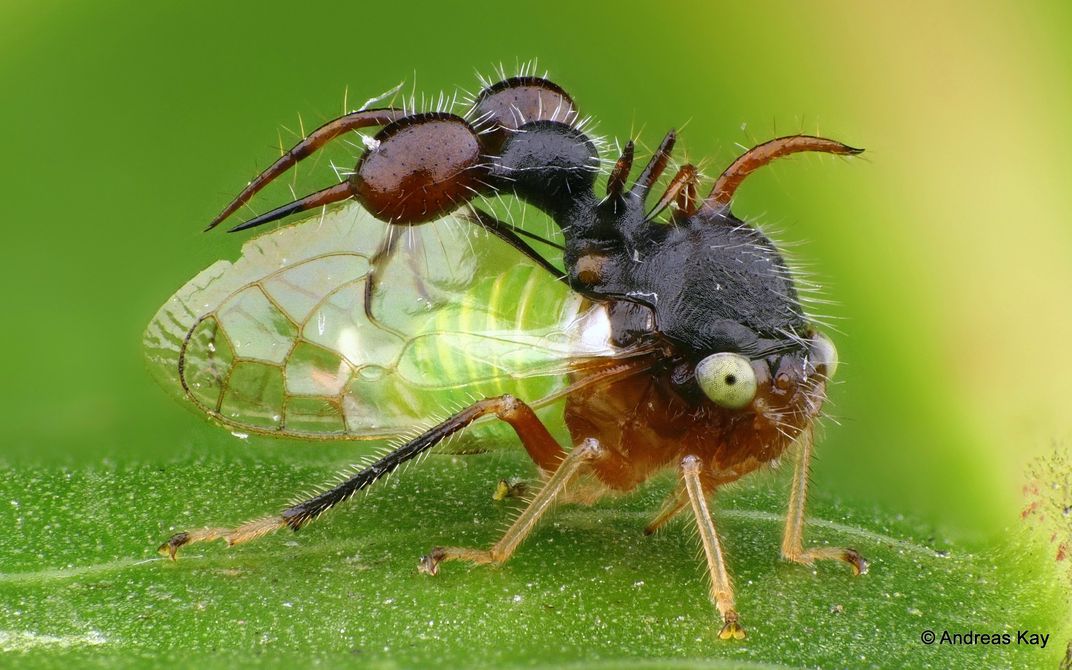
The findings also support an important evolutionary principle: Even the strangest structures aren’t simply conjured out of nothing. As new body parts evolve, they can mimic other pieces of anatomy, making copies of tried and true material before genetically warping into new forms.
“The helmet is still a pronotum,” Fisher says. “But by using all these wing development tools, treehoppers now have this whole new ‘morphospace’ they can evolve inside of. We should not underestimate the power of co-option.”
In insects, the thorax is made up of three segments, with wings reliably developing on the latter two. The first segment, closest to the head, remains vacant thanks to a molecular brake that shuts off the suite of genes which typically gives rise to wings. Prud’homme and his colleagues originally concluded that the treehopper’s first, wingless segment had somehow managed to circumvent this genetic hurdle.
But just a few months later, Yoshizawa pointed out that Prud’homme’s paper had misinterpreted some aspects of treehopper anatomy. For the helmet to be a wing, it had to be an appendage sprouting off the thorax—not a part of the thorax itself. Instead, he proposed an alternative: To take its unusual shape, he hypothesized, perhaps the treehopper’s pronotum had switched on a whole slew of genes normally reserved for wings. Eight years later, Fisher’s work suggests his hypothesis may be correct.
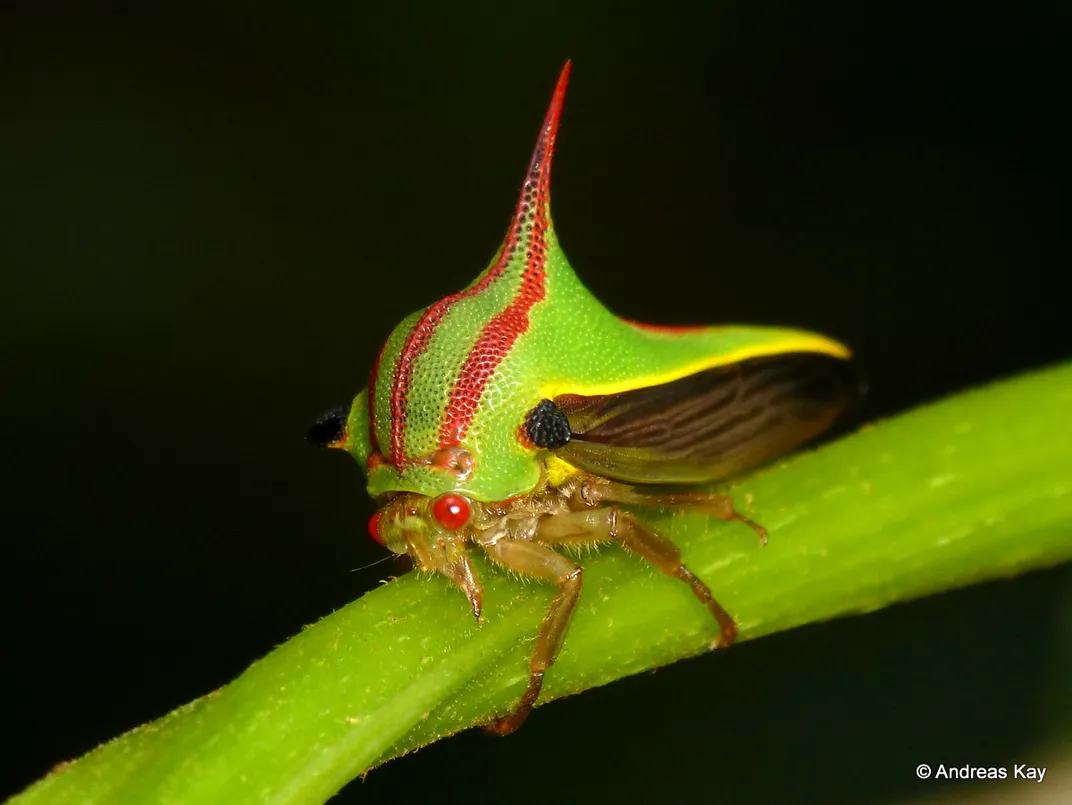
When the debate over treehopper helmets began, though, Fisher didn’t even know the creatures existed. “The first time I saw a picture of one, it was love at first sight,” she says. “I thought, ‘Oh my god, how did something like that evolve?’”
After scouring the scientific literature, Fisher, a graduate student at the time, realized her question remained unanswered. So she decided to tackle it herself, using the latest genetic sequencing technology to suss out the helmet’s developmental origins.
With the help of evolutionary biologists Jill Wegrzyn and Elizabeth Jockusch, Fisher collected juvenile treehoppers and leafhoppers, all in the midst of growing their adult pronota, and compared genetic material from a variety of different body parts, including the wings and thorax (helmet and all, in the treehopper’s case).
They found that, by and large, young treehoppers and leafhoppers used the same genes in the same body parts, with one exception: the pronotum. In leafhoppers, pronotum cells flipped their genes on and off much like cells in the rest of the thorax. Cells in treehopper helmets, on the other hand, looked completely foreign, as though they’d been “overwritten” by an unrelated region of the body, Jockusch says.
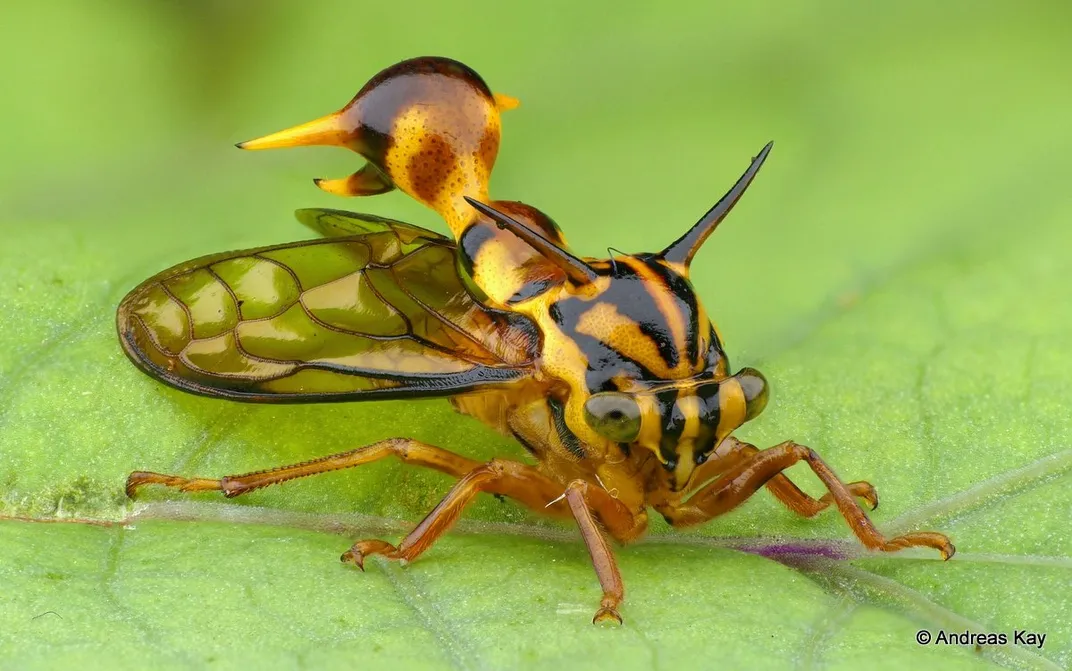
The developing helmet, they discovered, bore more genetic similarities to a developing wing than a developing segment of the thorax. “It was so thorough,” Jockusch says. “Hundreds of genes were giving off this wing-like expression pattern. [The pronotum] had just been taken over.”
Such extensive reprogramming could help explain how a normally dull, two-dimensional piece of thorax can develop as elaborately as a wing without ever becoming a wing itself, Fisher says.
Prud’homme, who now runs his own lab at the University of Marseilles, praises the new research, describing it as an extension of the work he and his colleagues did years ago. While the helmet may not be a true wing, “this builds the case that [the two body parts are] genetically and developmentally related,” he says.
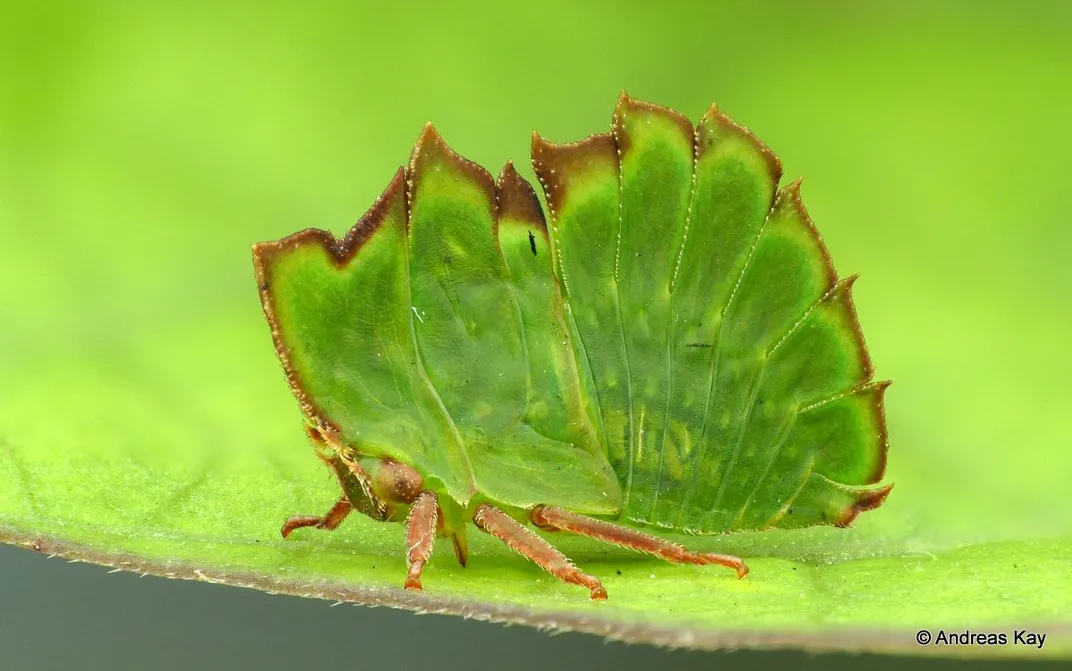
The case of the treehopper helmet isn’t fully closed, though. How wing genes get turned on in pronotum cells, and what—if anything—they have to do with the sheer diversity in the structure’s shape and size remain unresolved. Researchers aren’t even totally sure what purpose the helmets serve, though many suspect the insects are mimicking their surroundings to either blend in or warn predators to stay away (as a wasp-looking helmet might do).
Jockusch suspects that the pronotum had the unusual luxury to diversify because its function is so simple. All it needs to do, she explains, is close over the body and separate inside from outside. As long as that’s accomplished, the pronotum is free to do pretty much anything else. Treehoppers have no plan or purpose—just a lot of anatomical liberty. From there, evolution simply wings it.
/https://tf-cmsv2-smithsonianmag-media.s3.amazonaws.com/accounts/headshot/10172852_10152012979290896_320129237_n.jpg)
/https://tf-cmsv2-smithsonianmag-media.s3.amazonaws.com/accounts/headshot/10172852_10152012979290896_320129237_n.jpg)